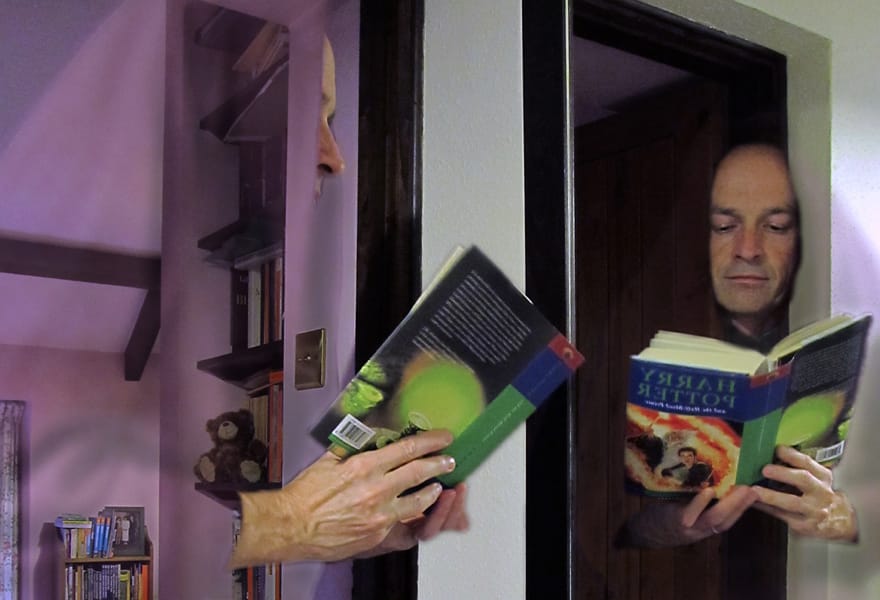The science behind real-life invisibility cloaks

This article is part of a collaboration with iQ by Intel.
Invisibility—or the concept of turning an object completely and undetectably transparent—is the stuff of make-believe, typically reserved for authors of Medieval fantasy, walls in videogames, and movies featuring precocious kid wizards with South Londoner accents. Yet it is not all magic rings and fairy dust. Lately cloaks of invisibility have become a topic of serious scientific discussion and, at least in theory, something scientists can bring about. What we once thought was imaginary may simply be really hard to do.
“What I mean by cloaking an object is that the object becomes fully transparent to visible light, not merely camouflaging or hiding objects,” explains Andrea Alù. Alù is an associate professor of engineering at the University of Texas, where he researches the strange behaviors of radio waves and light. He tells me there are plenty of tricks that give the illusion that something is invisible. Scientists at the University of Rochester, for instance, have developed special lenses that, when looked into, allow professionals like surgeons to gaze through the back of their hands while performing operations, sort of like x-ray vision goggles in real-life. Actually, it is an elaborate system of mirrors positioned just right.
Here’s another one. In 2012, Mercedes funded a camouflage technology that in essence hid vehicles in plain sight. It used cameras to capture the objects passing behind the car and projected them on a screen placed in front of the car, so that the car appeared to be clear as glass. Alù says this is similar to how nautical animals like mimic octopuses disguise themselves in nature, scanning the seabed and projecting the colors and patterns on their skin. Impressive, yes, but it is still a sleight of hand (or tentacle, as it were).

Instead of optical illusions, Alù is proposing a cloaking material with unusual properties that makes it genuinely invisible. This way, your hypothetical invisible body suit would cast no shadow as light gracefully rolled around your legs and hips and body instead of bouncing off of them. Naturally, light is not supposed to work like this. “The only way to go around our fundamental bounds is to use active cloaks,” says Alù. This gets complicated, but an active cloak involves curious man-made dyes and molecules known as metamaterials, which send light on a detour around an object. You can think of it as taking the bypass instead of driving down main street.
This tactic would effectively render things invisible, but it has some truly paradoxical side effects. Since it would take longer for light to travel all the way around an object—let’s say, your totally incognito invisible house—instead of passing straight through it, there would be a bizarre lag effect, where time would seem to progress at different rates. If, for instance, you were standing on the curb in front of your house and facing it, the area surrounding your invisible house would look normal. Clouds would blow by and trees would sway on their regular schedule. However, within the transparent rectangle where your cloaked and invisible house was located, time would appear to be moving noticeably slower, delayed by perhaps more than a few seconds.
“We’re fighting some fundamental laws of physics.”
“Essentially we’re fighting some fundamental laws of physics,” Alù tells me, and for that reason making objects legitimately see-thru will be extremely difficult. “You can do it. We do it for radio waves. But it is a really long shot,” he says. So why aren’t we all out prowling invisibly now? Well, for the time being, metamaterials only work (or fluoresce, in scientific terms) for a very limited amount time. In laboratories today, only objects no larger than a flea or a speck of dust can be turned invisible, but Alù concedes that it is uninteresting to make an object that is already imperceivable to the naked eye less perceivable. In the next two to five years, he is positive we will not be anywhere close to the scale of a house. In 100 years though, there is a better chance.
Then, science can get to work on levitating broomsticks.
Images via Andrew Gustar and Eric Tastad



